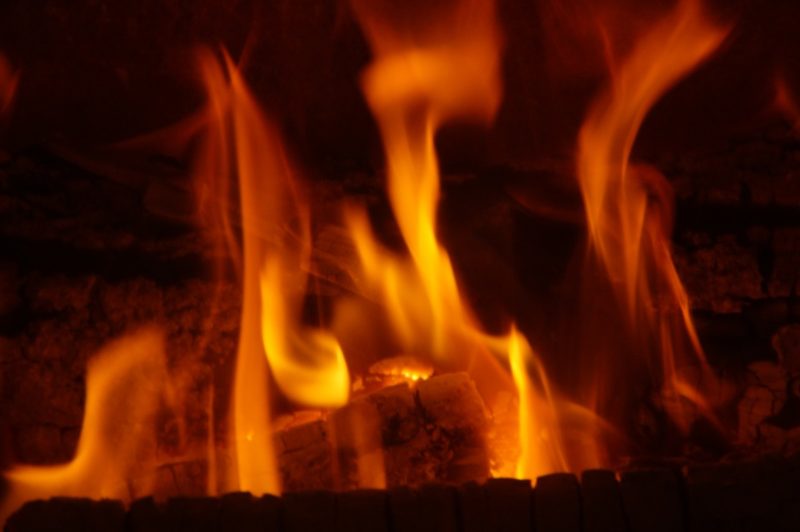Since winter can be brutal and convenient, you might be interested in knowing how to circulate wood stove heat. Unfortunately, your peace of mind may be twisted by the cold. That is why you need a quick yet effective answer. A wood fireplace is a fantastic way to keep the cold at bay.
Wood stoves make today’s house more comfortable by radiating heat. And you can heat the whole space in a short amount of time and with very little wood. However, many people have problems with the stove’s heat distribution. Your comfy room will not be a nice place to rest if the heat is not spread evenly. As a result, understanding how heat circulates is critical. So, how does heat from a wood stove spread evenly?

Tips To Circulate Wood Stove Heat
How to circulate wood stove heat? Here, we will look at some vital information and practical tips on the heat distribution of your stove that you may utilize without causing too many issues in your home.
Tip #1. Setting up the stove
The position of the stove is referred to as placement. It serves an essential purpose in keeping the space warm. Before you install a new stove, you need to think about a few things. For instance, you can consider putting it in the basement if you can. A wood stove in the basement can heat the whole house. Placing the stove in a lower location is beneficial because heat rises and circulates above it. Don’t worry if you don’t have one. There are many more solutions.
But what if you need to cover a large portion of the region? Keep the stove in the middle of your home for easy access. Keep the doors open for optimum circulation.
Tip #2. Better insulation
The stove may provide heat, but it is dependent on your home’s proper insulation. For example, if your windows are open, you can’t expect your space to feel warm and inviting. As such, keep your windows and doors shut. However, closing the windows all the time does not ensure that the air will refresh your home. You need to open these closures for a short period throughout the day to keep them fresh.
In a bigger area, curtains may help to reduce heat loss. They keep the heat in and keep unwanted air out of your house. In addition, you may use drapes to trap heat in a restricted area. If you want to circulate to another room, though, you don’t require hermetically sealed doors or curtains in the center.
You may know that heat rises and then descends, with warm air moving from the ceiling to the floor. However, in many cases, the dungeon generates the majority of the heat. As a result, you may use a plastic cover or other heat-resistant material on the ceiling.
Tip #3. Using fans
The use of fans to circulate heat is a time-honored method. Fans may disperse heat by rotating air. Larger fans are often used, although smaller fans may still be helpful. Fans can pull cold air from the ground and blast warm air down. Set the fan to blow in the opposite direction as the heat.
Don’t put the fan too close to the burner. Otherwise, it may cool the air instead of keeping it warm. Furthermore, ceiling fans and cooktop fans are great heat circulator alternatives, such as fans from a small air circulator. Learn the two main problems with kitchen ventilation that hinders good airflow.
As the temperature rises naturally, the airflow should increase as well. To get the best results, make sure your fan spins clockwise. However, you should note that the fan may work against you by rapidly cooling the room, so you must keep the fan speed as low as possible.
Tip #4. Using heating duct
This one is another efficient way of transferring heat into and out of your area. Only when the woodstove is near to or adjacent to the inline duct will it operate. Again, the furnace’s plenum plays the most crucial role in this. It evenly distributes heat based on input.
When a fan is connected to your home’s heating system, it will blow hot air once the wood burner is turned on.
Start the fan while the stove is heating up, and the plenum will take care of the rest. However, the process may fail if your house lacks an effective conduct system for transferring heat from one area to another. You may also take some extra measures in addition to these steps.
Specific heat duct kits, for example, are currently available on the market and are very useful. Another significant consideration is the issue of ventilation. If you’re having trouble lighting your wood stove, it’s likely because the airflow is too low.
To enhance the stove, make sure that oxygen is flowing through the windows. Remove any furniture or other items that may block the stove’s heat. You may think it’s unnecessary. However, a significant amount of heat is absorbed by objects and furniture. That is all for how you can circulate heat from your wood stove.
Its’ A Wrap!
How to circulate wood stove heat? For even heat distribution, it’s best to place your heat burner in the middle. If you want to make your room more pleasant, you must remember the tips on circulating wood stoves. Although, it is pretty expensive. You may expect a nice winter if the heat from a wood fire is appropriately dispersed.
Regardless, have you ever thought that you could paint your stove? If so, you might want to read that one here: How to paint a stove? You can always insert internal links using this template for future posts. Keyword: How to buy a stove This is the link; http://krostrade. com/blog/how-to-buy-a-stove/
